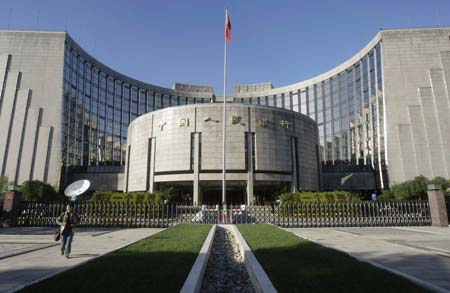Following a press release the Director-General of the World Trade Organization (WTO), Roberto Azevêdo made remarks on the theme of slowing global trade growth earlier this year. In 2017, there was optimism of renewed momentum in global trade which was backed by a 4.6% growth. This period of broad-based growth lasted throughout 2017 and into early 2018 until global trade tensions combined with economic uncertainty reduced economic momentum worldwide. In particular, we saw a drop to 3.0% global trade growth in 2018 and WTO economists expect merchandise trade volume growth to fall to 2.6% in 2019. Against this backdrop of weaker economic growth, the expansion in global trade volumes slowed across both developed and emerging markets.
Azevêdo specifically mentioned “The fact that we don’t have great news today should surprise no one who has been reading the papers over the last 12 months”. This is referring to the range of new tariffs put in place affecting the movement of goods and services across borders. This restricts the ability for global trade to play its roll in driving GDP growth and results in a greater level of economic uncertainty which lowers consumer and business consumption and investments. Efforts are being made to stabilize international economic relations and there is potential for a slight improvement in 2020 which is very much dependent on an easing of trade tensions in the new decade.
Canada’s Position
Canada’s Minister of International Trade Diversification, Jim Carr, wrote in The State of Trade Report for 2019 “[Canada] strongly supports free trade as a means to open foreign markets to Canadian goods and services”. Canada saw slightly slower trade growth in 2018 at 10% relative to the 11% growth seen in 2017. Despite the turbulence on the world stage, this still translates into Canada’s global merchandise trade value reaching a record high of CAD 1.5 trillion. Clearly Canada’s positive view towards open markets has helped trade growth relative to other countries. This is despite global uncertainty as Canada embraces the correlation between trade and investments resulting in economic growth and security for businesses.
Most concern for a further slowdown of trade growth or economic uncertainty derives from the evolving views from our trading partners and resulting economic uncertainty. This is particularly through trade considerations with Canada’s two largest trading partners, the United States and China.
United States: Canada’s Largest Trading Partner
Canadian and The United States goods and services trade totaled an estimated USD 714.1 billion in 2018. Imports were USD 360.5 billion; exports were USD 353.6 billion. A large part of what facilitates this trade is the agreements in place to allow the free flow of goods across borders. The North American Free Trade Agreement (NAFTA) between Canada, the United States, and Mexico had opened the three countries to the free-flow of most goods for over 20 years. This all changed when Trump called NAFTA “the worst trade deal in the history of the country”. A point built on years of American debate on the pros and cons of the agreement. The NAFTA negotiation started with aggressive tariffs from the United States to Canadian and Mexican goods and after intensive negational resulted in the new United States – Mexico – Canada Agreement (USMCA).
This agreement includes changes in manufacturing for automakers, intellectual property protections, digital trade provisions, a sunset clause, stricter labor, and environmental standards. Canada’s Foreign Affairs Minister, Chrystia Freeland, said, “USMCA will give our workers, farmers, ranchers, and businesses a high-standard trade agreement that will result in freer markets, fairer trade and robust economic growth in our region.” While this is great for Canadian business relative to the uncertainty present during the negations, it is important to note the term “free trade” is absent from the USMCA title and with the sunset clause it can be altered in the future. Following this unprecedented turbulence, Canada is more open than ever to look for trading opportunities beyond south of the border.
China: Canada’s Second Largest Trading Partner
USMCA has a specific clause that forces any of the three countries to notify the other partners to the agreement in advance of any free trade negotiations with a “non-market country.” The partners can then read the text of a new deal in advance and choose to provide six months’ notice of their departure from USMCA. This a major deterrent for any ambition Canada has to secure a trade pact with China.
Furthermore, Canada has been in a diplomatic dispute with China since the arrest of Meng Wanzhou in Vancouver last year as part of an extradition request from the United States. Wanzhou is the daughter of the founder of Huawei and also the CFO who is being accused of violating U.S. sanctions on Iran. In apparent retaliation, China has detained Canadians, sentenced a convicted Canadian drug smuggler to death in a sudden retrial and slapped tariffs on Canadian canola and meat products. The case started last year and is likely to drag on for months, or even years, as some past extraditions have taken, and relations between Canada and China are likely to continue to unravel. Moreover, bilateral merchandise trade between Canada and China totals nearly CAD 100 Billion annually. In particular, Canada imports around CAD 70 billion worth of goods which are mostly consumer items, contributing to Canada’s trade deficit with China. Despite this, China makes off Canada as a smaller portion of its CAD 16 trillion economy which translates to Canada needing China more than the other way around.
Looking Forward
As we enter the final quarter of 2019, an eventful year for international trade draws to a close. It is quite clear that trade is a fundamental part of today’s global economy and a key part of economic security. With the recent rise in protectionism and economic uncertainty, it is important for businesses to develop strategies that keep implications from global developments in mind as we face the tensions that will be inherited by the coming decade.
Featured image: Canada and International Business (2019), by Tehseen Rana. Courtesy of the Author.
Disclaimer: Any views or opinions expressed in articles are solely those of the authors and do not necessarily represent the views of the NATO Association of Canada.




